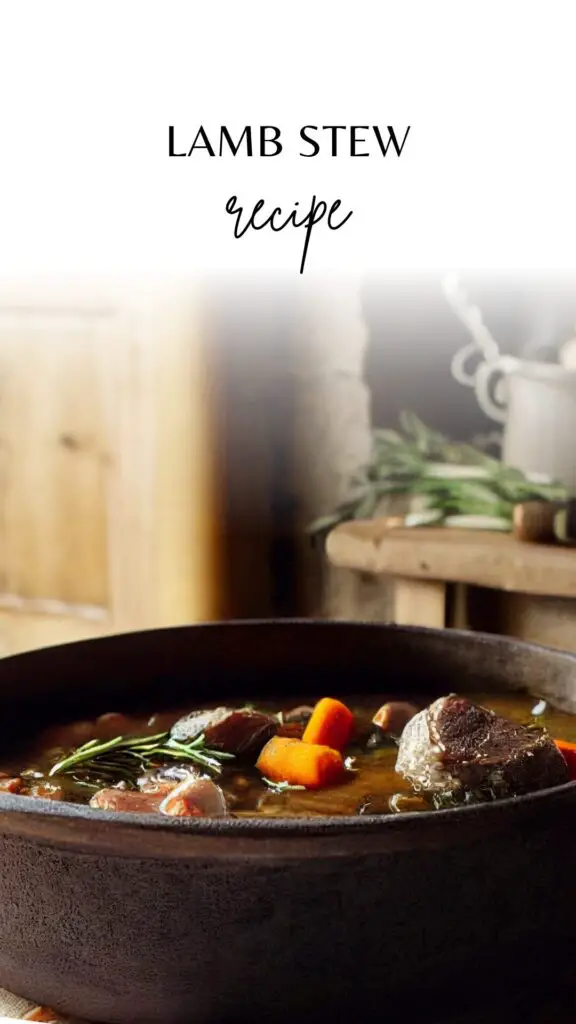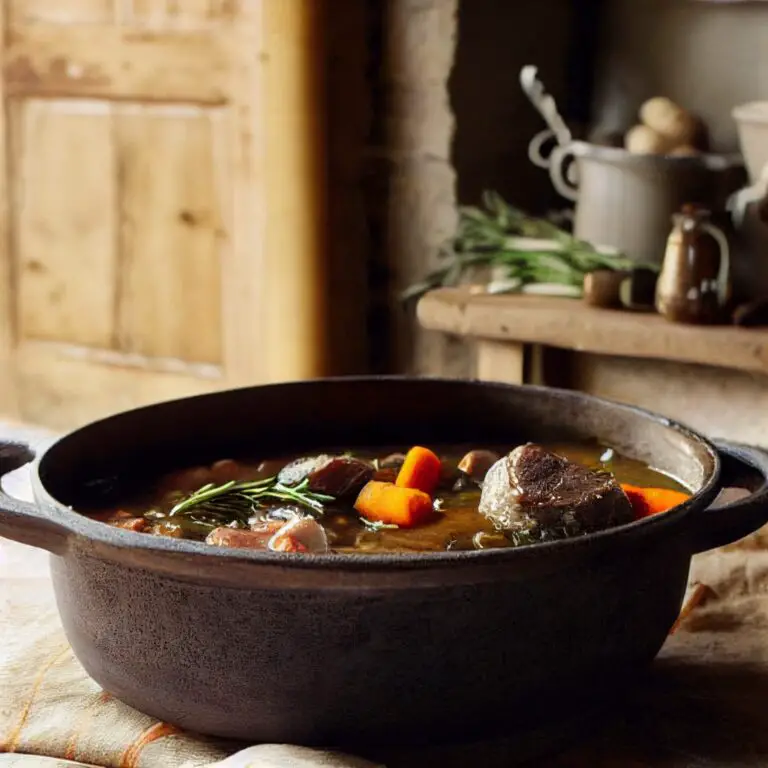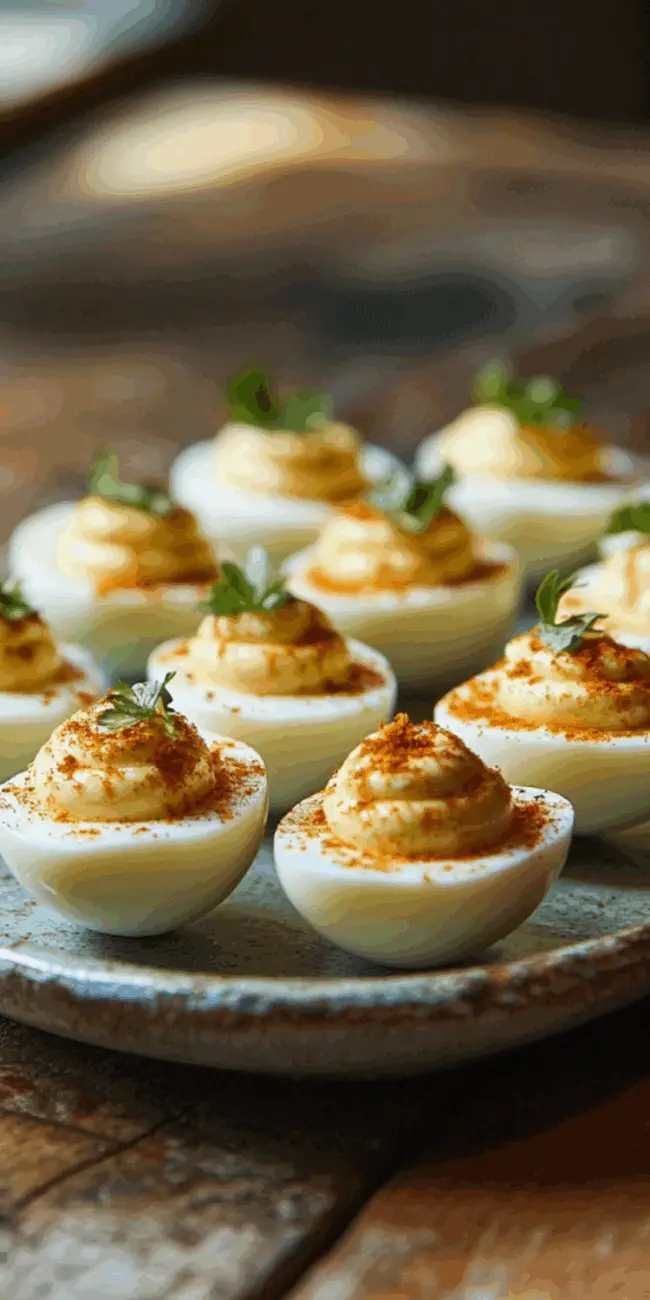Lamb stew is the ultimate comfort food. Packed with tender lamb, hearty vegetables, and rich flavorful broth, this stew will warm you up on even the coldest winter day. In this guide we will discuss how to make the perfect lamb stew, exploring ingredients, cooking methods, potential variations, and helpful tips to achieve stew success.
Choose Your Lamb and Prep
Lamb shoulder is the ideal cut for stewing as it has a good amount of connective tissue that breaks down during cooking to create a rich, silky texture. Look for a boneless lamb shoulder roast weighing about 2 to 2 1⁄2 pounds. Choose a roast that is well-marbled for the most flavor and tenderness. Once home from the market, trim off any excess fat or silver skin from the meat. Then cut the lamb into 1 to 1 1⁄2 inch cubes so the pieces will break down nicely during simmering. Pat the cubes dry with paper towels. This allows for superior browning when searing.

Sear the Lamb
Before braising, it’s important to brown the lamb. This adds deeper flavor as the natural sugars in the meat caramelize. Heat 2 tablespoons olive oil in a large dutch oven over medium-high heat. Working in batches, add the lamb cubes in an even layer and cook undisturbed until one side has achieved a nice brown crust, about 3 to 4 minutes. Turn the cubes and repeat on all remaining sides until richly browned. Transfer lamb to a plate as you go and set aside.
Build the Braise
With the lamb cooked, it’s time to build your braise. Start with basic aromatics. In the same dutch oven, sauté one small diced onion, two minced cloves garlic, and two teaspoons fresh or dried rosemary until the onion is softened, about 4 to 5 minutes. Pour in a tablespoon of tomato paste and let cook another minute. Pour in 1 1⁄2 cups red wine, such as a Cabernet or Syrah, and use a wooden spoon to dissolve any flavorful brown bits stuck to the pot’s bottom. Simmer until reduced by about half. Next add 6 cups lower sodium beef broth and one bay leaf and season with salt and pepper to taste. Return the seared lamb and any accumulated juices back into the liquid. Bring to a gentle simmer.
Choose Your Vegetables
Part of what makes stew so satisfying are plentiful vegetables simmered in the savory broth. Opt for firm vegetables that will hold up well to long cooking. Good choices include peeled potatoes (cut into 2-inch chunks), baby carrots, pearl onions or shallots, and celery cut into 1-inch pieces. You can also add herbs near the end like chopped parsley or thyme to keep their flavor vibrant. Tip in your choice of vegetables and simmer the stew gently until the lamb is fall-apart tender, about 1 1⁄2 to 2 hours.
Check for Seasoning and Finish
When the lamb is tender enough to shred with just a fork, the stew is done! Check seasoning and add more salt, pepper, or herbs to taste. If the broth seems thin, create a slurry by whisking 2 tablespoons cornstarch with 2 tablespoons water. Slowly whisk the slurry into the stew, allowing it to bubble for a minute to thicken up nicely. Discard the bay leaf before serving. Finish the stew with chopped parsley or cilantro.

Serving Suggestions
A hearty helping of lamb stew can be a meal all on its own with a nice chunk of crusty bread for dipping and soaking up the delicious broth. But it also pairs beautifully with buttery mashed potatoes, buttered egg noodles, or even hot cooked rice. Simple roasted vegetables also complement the rich stew.
Potential Variations of Lamb Stew
Once you master the basics, try out flavor variations on lamb stew:
- Use Guinness or another hearty beer rather than red wine
- Stir in a spoonful of curry powder or garam masala
- Add preserved lemon for brightness
- Swap out some of the lamb for chicken for a mixed stew
- Toss in chickpeas or white beans for extra protein
You might also want to try Boneless Leg of Lamb.
Leftover Lamb Stew
Like many braised dishes and stews, lamb stew tastes even better the next day once the flavors have had time to further develop. Refrigerate leftovers in an airtight container up to 4 days. Reheat gently on the stovetop with a splash of water or broth to prevent scorching. The rich stew also freezes extremely well for 2 to 3 months. Thaw overnight in the fridge before reheating.
Tips for Success
Follow these tips when making lamb stew for maximum flavor and tender meat texture:
- Take time to properly brown the lamb. Skipping this key step equals bland flavor.
- Use boneless lamb shoulder, which naturally has connective tissue for a rich broth.
- Resist the urge to stir too frequently. Let chunks simmer low and slow.
- Skim fat from the surface for a healthier, cleaner-tasting broth.
- Check for tenderness before adding more liquid. Lamb can cook quicker than beef.
- Season judiciously throughout cooking until flavors really sing.
Whether you want to warm up on a blustery night or have leftovers handy, lamb stew is the ultimate hearty one-pot meal. With meltingly tender lamb and vegetables steeped in a rich, savory broth, it’s no wonder stew is such a beloved comfort classic.
Print
Lamb and Root Vegetable Stew
5 Stars 4 Stars 3 Stars 2 Stars 1 Star
No reviews
Hearty Lamb Stew with Winter Vegetables
- Total Time: 1 hour 50 minutes
- Yield: 6 servings
Ingredients
2 lbs lamb shoulder, cut into chunks
3 carrots, peeled and chopped
2 parsnips, peeled and chopped
1 turnip, peeled and chopped
1 onion, chopped
3 cloves garlic, minced
4 cups beef broth
1 cup red wine
2 tablespoons tomato paste
1 teaspoon fresh rosemary, chopped
1 teaspoon fresh thyme, chopped
Salt and pepper to taste
2 tablespoons olive oil
Instructions
Heat olive oil in a large pot over medium-high heat. Add lamb and brown on all sides. Remove lamb and set aside.
In the same pot, add onion and garlic, cook until translucent.
Return lamb to the pot. Add carrots, parsnips, and turnip.
Stir in tomato paste, then pour in red wine and beef broth.
Add rosemary, thyme, salt, and pepper. Bring to a boil, then reduce heat to low and simmer for 1.5 hours, or until lamb is tender.
Adjust seasoning and serve hot.
- Author: Lindsey Chastain
- Prep Time: 20 minutes
- Cook Time: 1.5 hours








